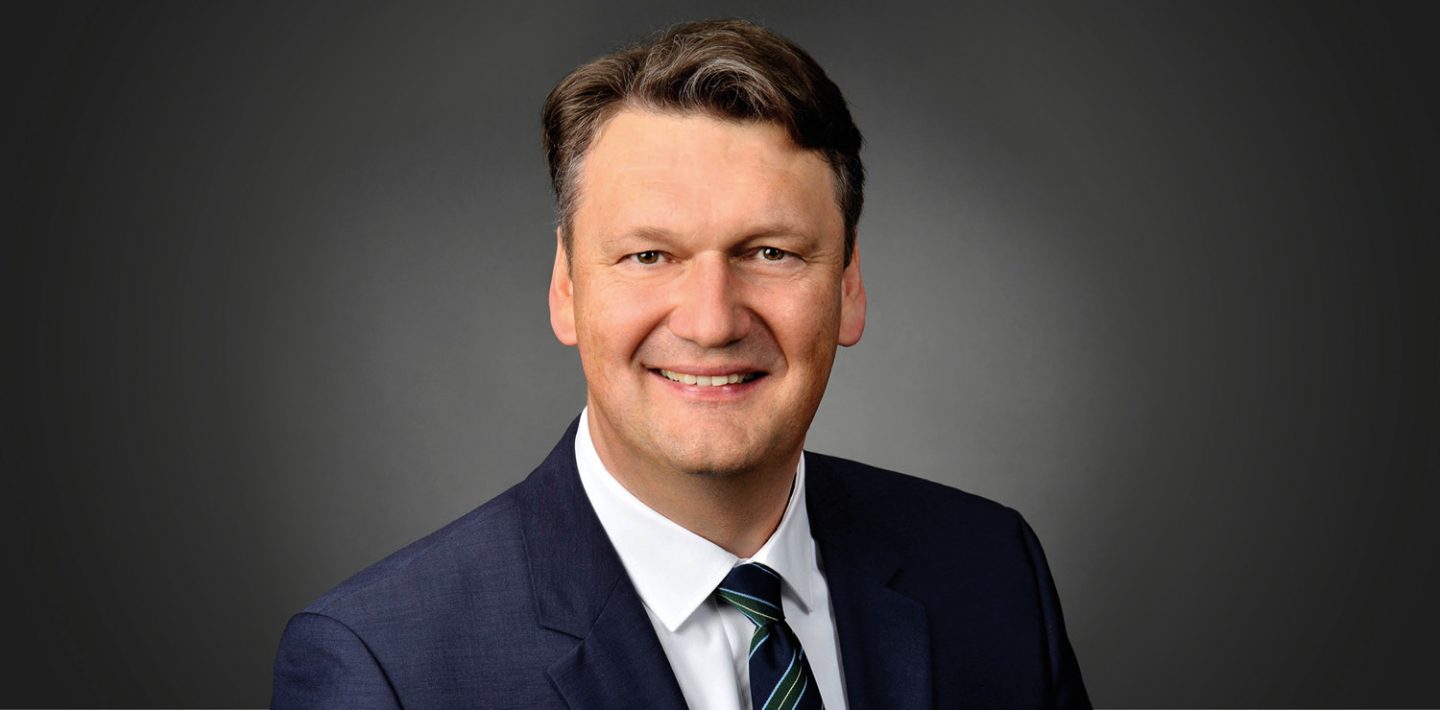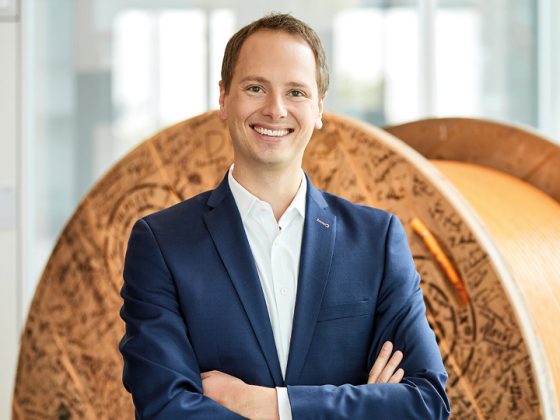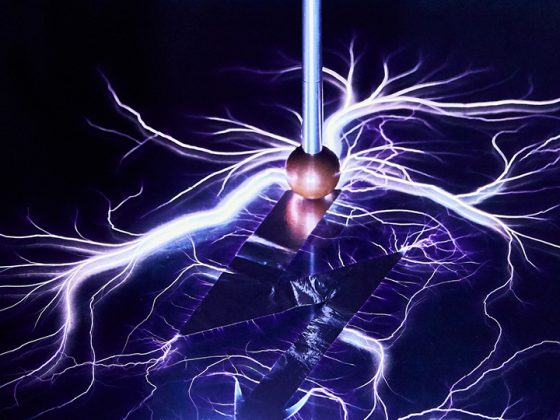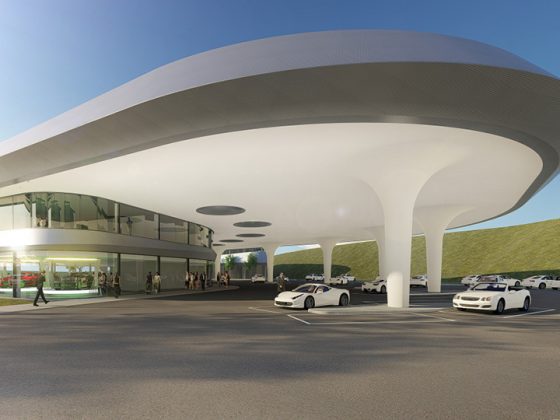
LAPPconnect: Flood disasters, forest fires, melting polar ice caps – climate change is felt by everyone. What needs to be done now?
Jörg Klasen: Climate protection and the reduction of greenhouse gases are one of the key challenges of our time. Many major industrialised countries and the European Union have committed to become climate-neutral by the middle of this century. Other countries will follow and adapt or substantiate their targets in the run-up to the UN Climate Conference COP26 in Glasgow in November 2021. However, achieving these targets will require enormous efforts from individual countries in all sectors, particularly in power and heat generation, in addition to decarbonisation of industry and transport. We need to generate even more energy from renewable sources such as wind and photovoltaics (PV) or, where possible, concentrated solar power (CSP), and avoid burning fossil fuels as far as possible.
Is the pace of expanding renewable energy sufficient?
According to the Renewable Capacity Statistics 2021 from the International Renewable Energy Agency (IRENA), global generation capacity from renewable energy increased by 10.3 % to 261 gigawatts in 2020, which equates to 82 % of the total net capacity growth. Within the renewable energy sector, 91 % of the new capacity was attributable to new wind and solar power plants. I assume this expansion will continue worldwide at a high level. New technologies such as hydrogen are also set to play an important role in storing energy or balancing fluctuating renewable energies and thus support the transition to a CO2-free energy supply. However, in order to achieve the ambitious climate targets issued at national level, the pace must be kept up, if not increased.
Despite this, CO2 emissions worldwide are continuing to rise. How do you explain that?
The transformation from fossil-based society and industry to carbon neutrality or zero CO2 emissions cannot be achieved in the short term. Many emerging countries have a rapidly growing demand for energy, and if coal is the backbone of power generation then CO2 emissions will continue to increase for the time being. However, it is the responsibility of the leading industrial nations to support these countries at an early stage in recognising and economically exploiting the opportunities offered by renewable energy and to conserve resources through a properly functioning circular economy.
As a manufacturer of cables and conductors, LAPP is also active in the energy market. At the same time, we are energy consumers ourselves. Which trends do you see that are relevant for industrial companies?
All sectors are challenged when it comes to climate change actions. For companies, I see three trends in particular: First, customers will increasingly demanding climate-neutral products and services. For example, Porsche only wants to procure CO2 neutral products from 2030 onwards. This means suppliers such as LAPP must produce their products in a climate-neutral manner. This includes the materials processed in production, the manufacturing processes and the energy procured.
And the LAPP employees too …?
Of course! The employees’ CO2 footprint at work and on the way to or from the workplace is also taken into account. The switch of employees to public transport, electric cars and bicycles will have an impact on the total CO2 footprint of the company.
A second trend in which LAPP, as I hear, is also very active is fast and flexible logistics thanks to integrated supply chains. We have recently seen why this is important in the flood disasters in Europe and North America. When power and data cables are destroyed, suppliers such as LAPP must be able to deliver new cables and components quickly and in the required quantities. And third, it’s about more intelligence in products for greater efficiency. Initiatives such as the “intelligent cable”, which collects and provides data in real time, for example for predictive maintenance, are worth mentioning here.
More renewable energy sources – this has an impact on the grids in particular. What are the challenges for the grid operators?
European transmission and distribution system operators are strongly affected by the growth dynamics of the energy transition and face great uncertainties. There are three major strategic challenges for them: First, a shortage of grid capacities. The demand for new connections exceeds the capacities of the transmission and distribution grid operators, in some cases significantly, which leads to ever longer waiting times for new connections and increasing grid bottlenecks. Second, there is uncertainty regarding future energy solutions and the impact of regulation, such as with hydrogen. Thirdly, the grid operators have only limited financial leeway. Grid operators must have a sound financial basis; for regulated businesses, a single-A rating is expected by the capital market.
But the operators still have to make their networks fit for the future. What should they pay attention to?
Until now, it was sufficient to operate the grid reliably, safely, and cost-effectively. Additional issues such as security, resilience, flexibility, and sustainability have now also emerged. Security means protecting the network and its operation against external and internal threats and attacks, including cyber-attacks. Resilience requires professional crisis management in the event of incidents and rapid recovery in the event of damage. Flexibility in the physical grid refers to the integration of decentralised energy systems such as renewable energy, controllable loads like electric vehicles or storage systems. Finally, for grid operators, sustainability means supporting their customers in achieving their renewable energy and decarbonisation commitments and targets, for example by quickly connecting new wind and PV plants, or using carbon-neutral materials in the own grids in the future.
Digitalisation should play a key role here …
Yes, digitalisation is important to make better use of existing grids and to avoid unnecessary grid expansion. Electricity always seeks the path of the least resistance. In this respect, the networks regulate themselves. However, if the load becomes too high at certain points, the line, especially the cable, is damaged by the thermal load, which can lead to direct failure or reduced service life. Energy generation and consumption were previously easy to predict, but this is no longer the case, which is why the grid operator needs information about the grid condition and the load flows. With increasing decentralised power generation from wind and PV plants in rural areas and solar roofs in residential areas, more congestions occurring. If the grid operator has access to data and information at many relevant points in the grid, they can quickly detect these bottlenecks and take countermeasures. Many grid operators are currently working on implementing a digital twin that digitally maps the physical network and enables other functionalities such as digital network planning, simulations, or automation in addition to control.
Looking to the future: What will change as the share of renewable energy grows?
The expansion of renewable energy will largely, if not completely, replace fossil energy in the long term. One of the main drivers of this is climate protection and the reduction of CO2 emissions. The sector in which we will see this first is power and heat generation, but it is already apparent that other sectors such as transport will abandon the burning of fossil fuels in the long term. Once the energy system has been reorganised new challenges will occur. However, issues such as the carbon footprint in the production and conservation of resources through recycling will remain.



